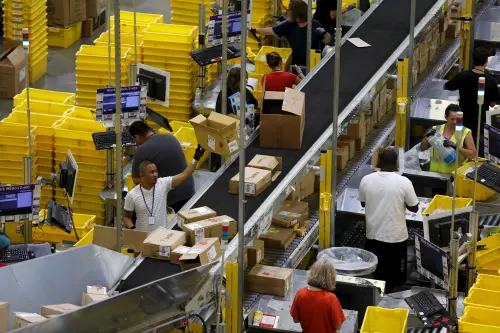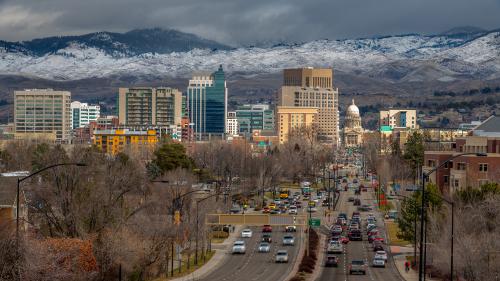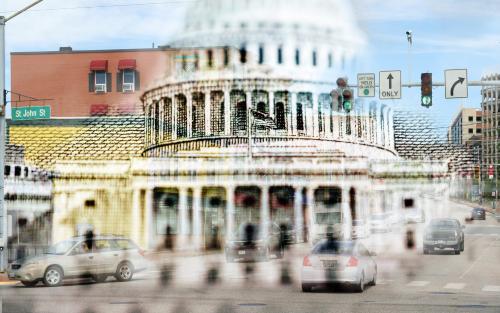Amazon’s recent announcement that it is soliciting bids from metro areas to establish a second headquarters site in North America has set off a predictable feeding frenzy within the economic development community. Hefty incentives are sure to be involved, and while these always merit deep skepticism and scrutiny, this is one of those unique cases where some level of creative incentives may be justified due to the highly competitive nature of the project and the expected economic impact. (Although as our colleagues Amy Liu and Mark Muro point out, Amazon’s RFP signals that it cares as much, if not more, about real investments in talent, quality infrastructure, and placemaking.) Whatever ultimately motivates Amazon’s decision, the HQ2 project represents a once in a lifetime opportunity that will be transformational for the city that is fortunate enough to win.
However, while HQ2 is consuming all the energy–numerous cities have set up “war rooms” to craft a response–comparatively little thought has been given to the more commonplace interaction metro areas have with Amazon, which revolve around its regional fulfillment centers. For each region, these fulfillment centers represent hundreds, and often thousands, of jobs, and typically one of the largest project announcements of the decade. According to a recent report by Michael Mandel of the Progressive Policy Institute, the expansion of e-commerce is creating good jobs and reducing income inequality. The study estimates that U.S. jobs in fulfillment centers and e-commerce companies rose by 400,000 from December 2007 to June 2017, while brick-and-mortar retail jobs declined by 140,000–a net gain of 261,000 jobs. Further, these e-commerce jobs pay 31 percent more than brick-and-mortar retail jobs. On the surface, then, an aggressive approach to attracting fulfillment centers seems appropriate. However, by digging just below the surface, the rational and fiscally responsible response becomes less clear. How should these projects be viewed and evaluated by economic development officials for their economic impact? In what situations should state and local governments provide incentives to attract these operations?
Some context: even as the unemployment rate hit 4.4 percent last month, the lowest rate in 10 years, state, regional, and local economic development organizations (EDOs) are staring down an onslaught of tough challenges, including the decline of good manufacturing jobs, few major business attraction prospects in other sectors to fill the gaps, and stagnant median wages coupled with widening inequality. Given these realities, it is no surprise that EDOs are eager to latch onto the highly publicized wins that the Amazon fulfillment centers represent. According to Good Jobs First, states and counties have awarded over $1.3 billion (and about $350 million in just the past couple of years) in incentives to attract Amazon facilities.
This is hugely problematic for a variety of reasons.
The most obvious is that in each of these cases, Amazon was going to come with or without incentives. It is a core tenet of Amazon’s strategy to be able to rapidly deliver products directly to people’s homes, increasingly with same day service, so they must have a major presence in every large region. Seemingly every metro area we’ve worked in over the past several years has highlighted the attraction of an Amazon facility as a major local economic development success story. (A quick web search confirmed the presence or recent announcement of one or more major Amazon fulfillment centers in or near each of the 40 largest US metro regions.) In these cases, state incentives make no sense. And county incentives are used only to influence selection of the actual site within a region, thus pitting local jurisdictions against each other to claim a political win, with no actual competitive benefit to the regional economy.
Second, while Amazon has the appearance of being the kind of tech company that states are desperate to attract, it’s actually just another form of retail operation in disguise. Retail very rarely receives any type of incentive because it doesn’t bring any of the spillover effects that (sometimes) justify major incentives for manufacturers and headquarters. And while e-commerce jobs now pay a premium relative to traditional retail jobs, they still pay far less than the lost manufacturing jobs that EDOs are trying to replace. Further, the recent announcement by Target that it will raise its minimum wage to $15/hour by 2020 raises the possibility that the e-commerce wage premium, at least relative to large retailers, will shrink or even disappear. (While we have not found official figures, recent job postings and input from the field appear to place Amazon’s entry-level wage at around $12-13/hour.)
Another issue is spatial mismatch. In our work across the country, many employers such as Amazon express frustration in not being able to find enough workers—while at the same time, workers complain of not having access to good jobs. This problem is predictable. While traditional retail jobs are spread throughout metro areas to be near customers (and by default, the workforce), warehouse and logistics operations (such as Amazon’s) consolidate employees under one roof on the periphery of the metro. Within the last year or so, traditional retailers such as Sears, Kmart, JCPenney, Macy’s, and Staples have all announced the planned closure of hundreds of stores throughout the U.S. Others, such as The Limited, American Apparel, and Radio Shack have announced plans to close altogether. The Amazon jobs that replaced these are less accessible to many of the lower-skilled employees that are best suited to fill them because workers do not live nearby. Lack of access to transit, zoning decisions that limit nearby affordable housing, and childcare responsibilities severely limit the number of workers in a given region for which this type of job commute makes sense.
And finally, EDOs should consider whether Amazon jobs are more prone to eventual replacement by automation. In 2012, Amazon purchased Kiva, a company that makes warehouse robots, for $775 million. The company increased the number of robots in 20 of its fulfillment centers by 50 percent over the last year, from 30,000 to 45,000.
So, while it seems likely that Amazon will need a robust workforce in the near term, the company also appears to be preparing for a future where it needs less and less labor.
As other commentators have pointed out, both corporations like Amazon and local officials bear some of the blame for creating an economic development system that revolves around government giveaways to corporations. Federal intervention may be required to end it. But in the meantime, local economic development practice must evolve and become more strategic and pragmatic. In the case of Amazon, since fulfillment centers are going to come to each large metro area, and don’t represent a real or automation-proof replacement for lost middle-wage jobs, the only apparent reason to provide incentives would be to influence where within the region the facility is sited. And perhaps the only reason this matters would be to ensure that the project is more conducive to inclusive growth (i.e., nearer to, or with better transit access for, the populations most in need of those jobs). In other words, providing incentives is only rational if it is enticing Amazon to do something it would not otherwise do, and that drives towards stated regional economic development priorities. Even in this case, Amazon would gain better access to its target workforce, resulting in a win-win outcome for metro areas and for Amazon.







Commentary
Beyond HQ2: How should local economic development officials respond to Amazon?
October 3, 2017